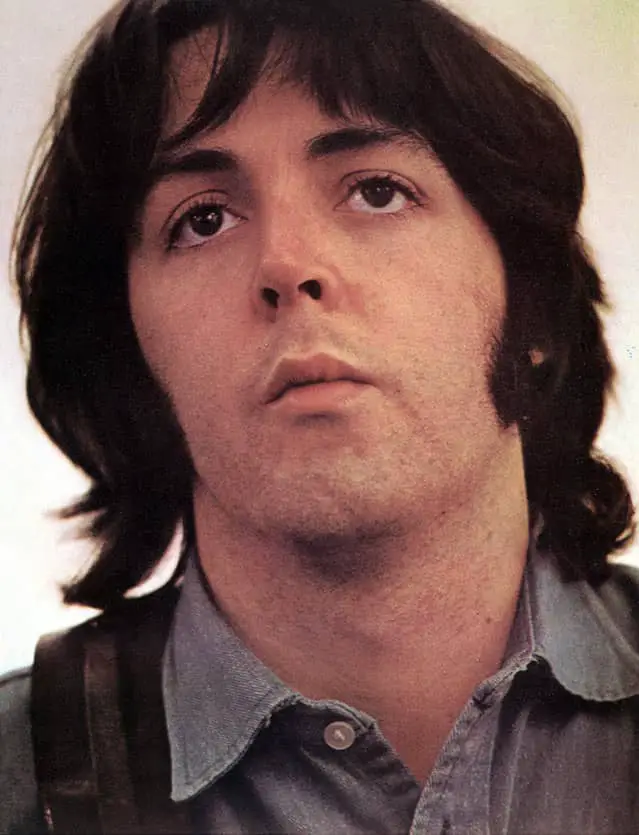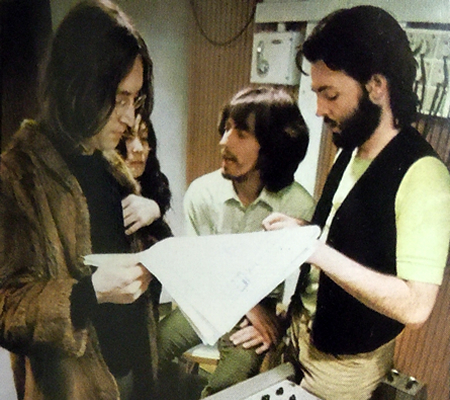


Pepper, where every Beatle except McCartney is photographed facing the viewer, and the front cover of Magical Mystery Tour, which depicts one unidentified band member in a differently coloured suit from the other three. Also referenced was the back cover of Sgt. On 17 September 1969, Tim Harper, an editor of the Drake Times-Delphic, the student newspaper of Drake University in Des Moines, Iowa, published an article titled "Is Beatle Paul McCartney Dead?" The article addressed a rumour being circulated on campus that cited clues from recent Beatles albums, including a message interpreted as "Turn me on, dead man", heard when the White Album track " Revolution 9" is played backwards. Problems playing these files? See media help. In a later interview, he said that he was purposely confusing listeners with lines such as "the Walrus was Paul" – a reference to his song " I Am the Walrus" from the 1967 EP and album Magical Mystery Tour. John Lennon wrote the song in response to "gobbledygook" said about Sgt. In November 1968, their self-titled double LP (also known as the "White Album") was released containing the track " Glass Onion". Analysing their lyrics for hidden meaning had also become a popular trend in the US. By 1967, the Beatles were known for sometimes including backmasking in their music. McCartney then alluded to the rumour during a press conference held around the release of Sgt. The rumour was acknowledged and rebutted in the February issue of The Beatles Book. In early 1967, a rumour circulated in London that Paul McCartney had been killed in a traffic accident while driving along the M1 motorway on 7 January.

In 2009, Time magazine included "Paul is dead" in its feature on ten of "the world's most enduring conspiracy theories". McCartney parodied the hoax with the title and cover art of his 1993 live album, Paul Is Live. During the 1970s, the phenomenon was the subject of analysis in the fields of sociology, psychology and communications. Rumours declined after an interview with McCartney, who had been secluded with his family in Scotland, was published in Life magazine in November 1969. These include the 1968 song " Glass Onion", in which Lennon sings "Here's another clue for you all / The walrus was Paul", and the cover photo of their album Abbey Road, in which McCartney is shown barefoot and walking out of step with his bandmates. Afterwards, the band left messages in their music and album artwork to communicate the truth to their fans.

Clue-hunting proved infectious, and within a few weeks had become an international phenomenon.Īccording to the theory, McCartney died in a car crash and to spare the public from grief, the surviving Beatles replaced him with the winner of a McCartney look-alike contest, sometimes identified as "William Campbell", "Billy Shears" or William Shears Campbell. Proponents based the theory on perceived clues found in Beatles songs and album covers. The rumour began circulating around 1967, but grew in popularity after being reported on American college campuses in late 1969. " Paul is dead" is an urban legend and conspiracy theory alleging that English musician Paul McCartney of the Beatles died on 9 November 1966 and was secretly replaced by a look-alike.


 0 kommentar(er)
0 kommentar(er)
